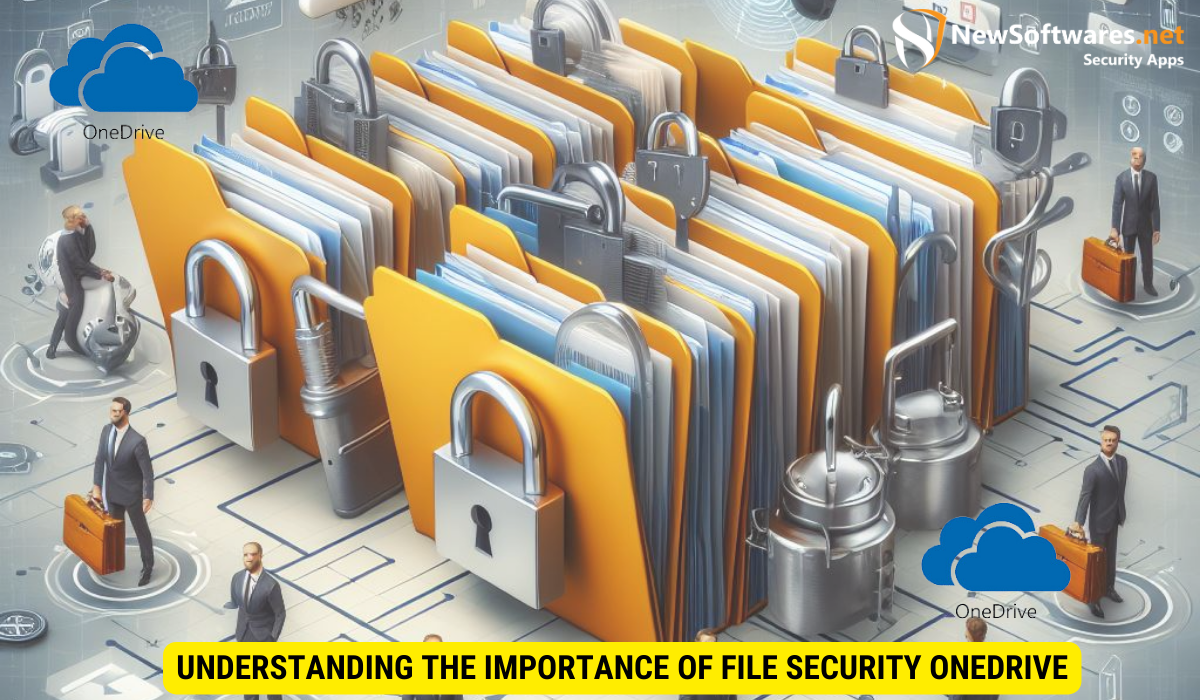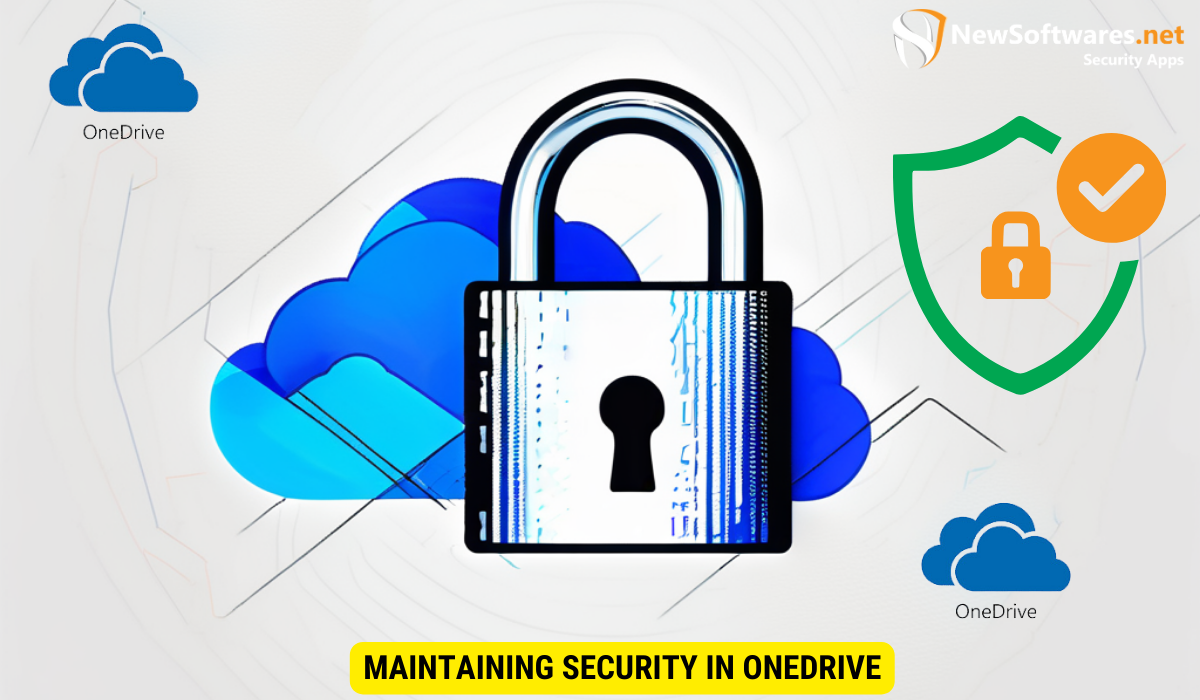In today’s digital age, the security of our files and documents is more important than ever. With sensitive information being stored and shared online, it’s crucial to take the necessary steps to protect our data. One effective way to enhance file security is by locking folders in OneDrive, a popular cloud storage service offered by Microsoft. Together, we will explore the importance of file security, the role of OneDrive in maintaining it, and provide a step-by-step guide to locking folders in OneDrive. Whether you’re a business professional or an individual user, this article will equip you with the knowledge and tools to safeguard your files.
Understanding the Importance of File Security OneDrive

In an era where data breaches and cyber threats are increasingly prevalent, file security should be on top of everyone’s priority list. The consequences of unauthorized access to sensitive files can be severe, ranging from identity theft to financial loss and damaged reputation. By maintaining strong file security, you not only protect your own data, but also the confidential information of clients, colleagues, or family members who might share files with you. It’s essential to recognize the potential risks and take proactive measures to mitigate them.
The Role of OneDrive in File Security
OneDrive plays a crucial role in file security by providing a secure platform for storing and sharing files. With robust encryption and advanced access controls, OneDrive ensures that your files are kept safe from unauthorized access. By leveraging Microsoft’s state-of-the-art security infrastructure and compliance standards, OneDrive offers industry-leading protection against potential threats. This includes features like two-factor authentication, detection and response to suspicious activities, and regular security updates to stay ahead of emerging risks. Therefore, using OneDrive as your primary storage solution can significantly enhance the security of your files.
Why Locking Folders Matters
Locking folders within OneDrive adds an additional layer of protection to your most sensitive files. It allows you to restrict access to specific folders, ensuring that only authorized users can view or modify them. By locking folders, you can prevent accidental deletions or unauthorized changes, keeping your files intact and secure. Whether you’re sharing files with colleagues, clients, or working on a collaborative project, locking folders in OneDrive ensures that your valuable information remains confidential and protected.
Furthermore, locking folders in OneDrive also helps you stay organized and maintain a structured file system. By categorizing your files into different locked folders, you can easily locate and access the information you need without wasting time searching through a cluttered directory. This level of organization not only improves your productivity but also reduces the chances of accidentally sharing sensitive files with the wrong individuals.
Moreover, locking folders in OneDrive allows you to implement granular access controls. You can specify different permission levels for various users or groups, ensuring that each person has the appropriate level of access to the files within the locked folder. This feature is particularly useful when collaborating on projects with multiple stakeholders, as it allows you to maintain control over who can view, edit, or delete specific files. By granting access only to those who need it, you minimize the risk of unauthorized actions and maintain the confidentiality of your files.
The Basics of OneDrive
Before we delve into the process of locking folders in OneDrive, let’s familiarize ourselves with the basics of this versatile cloud storage service.
Getting Started with OneDrive
OneDrive is deeply integrated with the Microsoft ecosystem, making it accessible to Windows users across various devices. To get started, all you need is a Microsoft account, which you can create for free. Once you’re signed in to your account, you can access OneDrive through a web browser or download the desktop or mobile applications. OneDrive offers a generous amount of storage space, allowing you to store documents, photos, videos, and more in the cloud.
Exploring OneDrive’s Features
OneDrive offers a wide range of features designed to enhance productivity and file management. With OneDrive, you can not only store and access your files from any device but also collaborate in real-time with colleagues or friends. You can create, edit, and share documents using popular Microsoft Office applications, such as Word, Excel, and PowerPoint. OneDrive also enables seamless file sharing, allowing you to send files to others via email links or set specific permissions for different users. Additionally, OneDrive has an intuitive search function, making it easy to find files and folders quickly.
Step-by-Step Guide to Locking Folders in OneDrive
Now that you understand the value of file security and the basics of OneDrive, let’s dive into the process of locking folders within this powerful cloud storage platform.
Preparing Your Files for Locking
Prior to locking any folders, it’s essential to organize your files and determine which ones require enhanced security. Identify the folders containing sensitive information and ensure that the necessary files are placed within them. By taking a systematic approach, you can streamline the locking process and avoid securing unnecessary folders.
The Process of Locking Folders
Locking folders in OneDrive is a simple and straightforward process. Follow these step-by-step instructions to secure your files:
- Login to your OneDrive account.
- Navigate to the folder you wish to lock.
- Right-click on the folder and select “Manage access”.
- In the “Permissions” tab, click on the drop-down menu next to “Who can access” and select “Specific people”.
- Add the email addresses or Microsoft accounts of the individuals who should have access to the folder.
- Choose the appropriate permission level for each user (e.g., view-only or edit).
- Click “Apply” to save the changes.
By following these steps, you can effectively lock folders in OneDrive and restrict access to authorized individuals only.
Troubleshooting Common Issues
While locking folders in OneDrive is generally a smooth process, it’s essential to familiarize yourself with potential challenges and how to overcome them.
Dealing with Locking Errors
If you encounter errors while attempting to lock folders, ensure that you have the necessary permissions to modify folder settings. Make sure you’re logged into the correct Microsoft account, and if you’re part of an organization, contact your IT department for assistance. Additionally, ensure that you have a stable internet connection, as interruptions may cause errors during the locking process.
Resolving Access Issues
If you encounter issues with accessing locked folders or sharing files with others, double-check the permissions assigned to each user. Confirm that the email addresses or Microsoft accounts are entered correctly, and ensure that the individuals you’re sharing with have OneDrive accounts. If problems persist, contact OneDrive support for further guidance.
Maintaining Security in OneDrive

Locking folders in OneDrive is an essential step towards enhancing file security, but it should not be the only measure you take. Regularly updating your security measures is crucial to staying one step ahead of potential threats.
Regularly Updating Your Security Measures
Microsoft frequently releases security updates for OneDrive to address emerging threats and vulnerabilities. It’s imperative to keep your OneDrive application and operating system up to date to benefit from these improvements. Set your devices to automatically install updates or regularly check for updates manually to ensure that you’re utilizing the latest security features.
Best Practices for File Security in OneDrive
In addition to locking folders, several best practices will further strengthen your file security in OneDrive. These include regularly backing up your files, using strong and unique passwords, enabling two-factor authentication, avoiding suspicious email attachments or links, and educating yourself on common phishing techniques. By adopting these practices, you can create a robust security framework for your files.
Key Takeaways
1. File Security Matters: Recognize the crucial importance of file security in today’s digital landscape, where sensitive data faces increasing risks of breaches and cyber threats.
2. OneDrive’s Role: Understand how OneDrive serves as a key player in maintaining file security, offering robust encryption, advanced access controls, and regular security updates to safeguard your files.
3. Locking Folders Enhances Protection: Learn how locking folders in OneDrive provides an additional layer of protection for sensitive files, preventing unauthorized access and accidental alterations.
4. Organizational Benefits: Discover how locking folders helps you stay organized, maintain a structured file system, and implement granular access controls, enhancing productivity and reducing the risk of data breaches.
5. Step-by-Step Guide: Follow a simple step-by-step guide to effectively lock folders in OneDrive, ensuring that only authorized individuals can access and modify sensitive files.
FAQs
1. Can I lock individual files within a locked folder in OneDrive?
No, OneDrive’s folder locking feature applies to the entire folder and its contents. It does not provide the option to lock individual files within a locked folder.
2. Can I grant temporary or time-bound access to a locked folder?
Currently, OneDrive does not offer a built-in feature to grant temporary access to a locked folder. However, you can manually adjust the permissions for specific users to revoke access when needed.
3. What happens if I forget to lock a sensitive folder in OneDrive?
If you forget to lock a sensitive folder, the files within it may be accessible to anyone with access to your OneDrive account. It’s essential to be diligent in identifying and locking folders that contain sensitive information to ensure its security.
4. Can I access locked folders on different devices?
Yes, you can access locked folders on different devices as long as you’re signed in to your OneDrive account and have the necessary permissions. OneDrive provides a seamless experience across various platforms, including Windows, Mac, iOS, and Android.
5. Can I share locked folders with individuals who do not have a Microsoft account?
Yes, you can share locked folders with individuals who do not have a Microsoft account. However, they will need to create a Microsoft account or use their existing email address to sign up for a free OneDrive account in order to access the shared folder.
Conclusion
Securing your files and documents is of paramount importance in our digitally connected world. By understanding the significance of file security, leveraging the power of OneDrive, and effectively locking folders, you can safeguard your most sensitive information from unauthorized access. Remember to regularly update your security measures and adopt best practices to stay vigilant against evolving threats. By taking proactive steps towards file security, you can enjoy peace of mind while harnessing the benefits of cloud storage technology.
